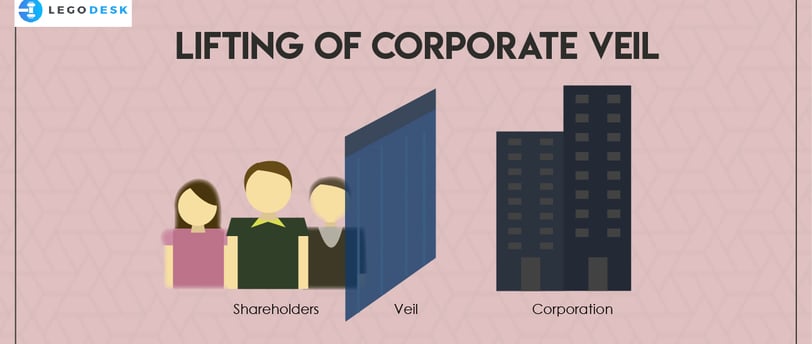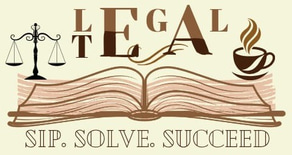Lifting the Corporate Veil in Company Law: Principles, Cases, and Modern Trends
One of the cornerstone doctrines of company law is the principle of separate legal personality. A company, once incorporated, is treated as a separate legal entity, distinct from its shareholders, directors, and promoters. This concept was famously cemented in the landmark English case of Salomon v. A. Salomon & Co. Ltd. (1897), where the House of Lords upheld that Mr. Salomon was not personally liable for the company's debts.
Anish Sharma, 3rd year, B.A., LL.B (hons.)
4/29/20253 min read


However, while the doctrine of separate legal entity is critical for encouraging investment and limiting liability, it can sometimes be misused. To prevent such abuse, courts have developed the equitable doctrine of lifting (or piercing) the corporate veil — allowing the judiciary to look behind the legal personality of the company and fix liability on real individuals involved.
In this article, we delve deeper into the concept of lifting the corporate veil: its grounds, case laws, statutory recognition, and evolving trends.
Understanding the Corporate Veil
The "corporate veil" metaphorically describes the legal separation between the company and its members. Shareholders are usually not liable for the company’s debts beyond their shareholding. This limited liability encourages entrepreneurship and risk-taking — a foundation of capitalist economies.
However, when the company structure is used to:
Perpetrate fraud,
Circumvent law,
Hide true ownership,
Evade tax,
Commit wrongdoings,
then the protection afforded by corporate personality may be withdrawn by courts to serve justice.
Grounds for Lifting the Corporate Veil
Courts typically lift the corporate veil under specific circumstances. Below are some of the common grounds recognized both in India and internationally:
1. Fraud or Improper Conduct
When the company is a mere sham or used to commit fraud, courts lift the veil to expose the true actors.
Case Example:
Delhi Development Authority v. Skipper Construction Co. (1996) — The Supreme Court of India held that the veil could be lifted where it is necessary to achieve justice by exposing fraud.
2. Evasion of Legal Obligations
If the company is formed or used to evade existing legal duties, courts intervene.
Case Example:
Gilford Motor Co. Ltd. v. Horne (1933) — A former employee created a company to avoid a non-compete clause. The court lifted the veil to enforce the covenant.
3. Agency Relationship
If the company acts as an agent or trustee for its shareholders or another company, courts may look beyond its separate personality.
Case Example:
Re F.G. Films Ltd. (1953) — A British company was found to be merely acting on behalf of an American company; the veil was lifted.
4. Group Companies
In certain cases, the economic reality of a group of companies operating as a single entity is recognized, especially for tax or regulatory purposes.
Case Example:
State of U.P. v. Renusagar Power Co. (1988) — The Indian Supreme Court treated Hindalco and Renusagar as a single entity.
5. Protection of Revenue and Tax Avoidance
When corporate structures are designed solely to evade taxes, courts may disregard the company’s separate personality.
Case Example:
Commissioner of Income Tax v. Meenakshi Mills Ltd. (1967) — Supreme Court held that corporate personality can be disregarded to prevent tax evasion.
6. Public Interest and National Security
Companies engaging in activities contrary to national interests may lose the protection of corporate personality.
Statutory Recognition in India
Several sections of the Companies Act, 2013 recognize scenarios where individual liability is imposed, bypassing the corporate veil:
Section Provision Explanation
Section 7(7) Furnishing false or incorrect Personal liability for fraud during formation.
information at incorporation
Section 251(1) Application for striking off name Directors and officers held personally
with fraudulent intent responsible.
Section 339 Fraudulent conduct of business during Directors can be personally liable for debts.
winding up
Section 34 & 35 Misstatements in prospectus Civil and criminal liability for directors and promoters.
Other statutes such as the Income Tax Act, 1961, Foreign Exchange Management Act, 1999, and Prevention of Money Laundering Act, 2002 also permit the lifting of the veil in specific cases.
Judicial Trends: Conservative Yet Necessary Approach
Courts generally exercise caution before lifting the corporate veil, respecting the foundational doctrine of corporate law. The veil is only lifted in clear cases of abuse. Modern Indian courts apply a substance over form approach, preferring to look at the real intent and effect of corporate structures rather than their legal formality.
Recent Developments
Environmental Concerns: Courts are increasingly lifting the veil where companies pollute the environment or violate environmental laws.
Corporate Governance: In cases of insider trading, financial frauds, and corporate scams (such as the Satyam case), authorities and courts have pierced the corporate veil to bring the wrongdoers to justice.
Cross-border Operations: Multinational enterprises operating through local subsidiaries are being closely scrutinized to ensure they are not evading regulatory controls.
Criticism and Challenges
Uncertainty: Frequent lifting of the veil may create unpredictability and deter genuine business operations.
Judicial Overreach: Critics argue that excessive piercing can undermine the principle of limited liability.
Balancing Act: Courts must carefully balance between preventing abuse and upholding the sanctity of corporate personality.
Conclusion
The doctrine of lifting the corporate veil exemplifies how company law balances entrepreneurial freedom with accountability. It acts as a safety valve, ensuring that corporate structures are not used as instruments of fraud, evasion, or injustice.
While courts generally uphold the sanctity of separate legal personality, they remain vigilant in piercing the veil whenever justice demands it. This delicate balance ensures that corporate entities contribute to economic growth without becoming shields for wrongdoing.
In a world of increasingly complex corporate structures and globalization, lifting the corporate veil remains more relevant than ever — reminding us that while companies are artificial persons, human responsibility cannot be artificially erased.
Because Every Legal Mind Deserves a Great Conversation.
Legaltea.in@gmail.com
+91 6284295492
MSME Certified
© 2025 Legal Tea. All rights reserved.


